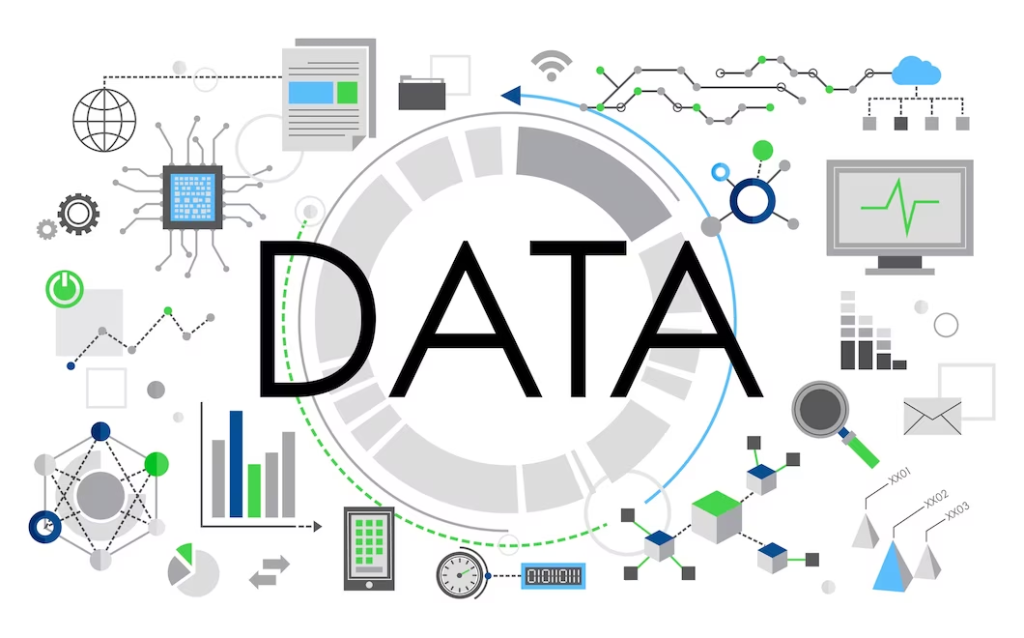Getting to the Core: Exploring Foundation Models in Generative AI

In the last couple of months, the hullabaloo around Generative AI, in particular, has thoroughly captivated our imaginations. How so? With its ability to create content (in the form of text, images, and multimedia) that is so human-like it is almost impossible to differentiate.
As AI and tech enthusiasts, we have all wondered what lies at the heart of t transformative technology and what fuels the innovation behind AI-generated content. Our latest blog piece will answer all your questions.
As we embark further in this blog, we will uncover the role and power of Generative AI and Foundation Models. You will see how the ongoing era of new technology has illuminated data pathways for industries that were earlier just a big mystery.
Foundation Models
Foundation Models are the cornerstone upon which the Generative AI structure stands. Imagine Generative AI as the Great Pyramids and the Foundation Models as the Egyptians- architects of one of the most renowned creations in history.
Not just that, Foundation Models are the neural networks reshaping the landscape of Generative AI. These are not just algorithms; they are catalysts for growth and revolution in industries like finance, healthcare, entertainment, and many more.
So, let’s unravel the core of Generative AI together. Let’s start with the Transformer architecture.
Transformer Architecture: The Game Changer
The Transformer architecture is what revolutionized model architecture and evolved the way Artificial Intelligence systems understand, process, and generate human language.
The Transformer’s self-attention mechanism is like teaching an AI to read and write in a more human-like manner.

The Mechanism of Foundation Models
Foundation models work through pre-training and fine-tuning. These models are designed to comprehend and generate human-like data. Here is how:
Pre-training: The pre-training process of Foundation Models involves feeding them massive datasets with diverse text and other data types which helps the models learn statistical patterns, relationships, and contextual information of the data.
The Transformer architecture plays a pivotal role in this phase. Its self-attention mechanism helps the model efficiently capture dependencies and relationships within the data.
This is how the model learns to predict the next word or component in a sequence based on the preceding words or components. This process also enables the model to develop a deep understanding of language and data structures.

Fine-Tuning: After the pre-training process is complete, the foundation models enter the fine-tuning phase, where they are specialized for focused tasks or fields. This is done by training them on relatively smaller but task-specific datasets.
For instance, a pre-trained foundation model is fine-tuned for specific tasks like sentiment analysis, language translation, or generating content.
Under fine-tuning, the model’s parameters are updated to optimize its performance on the specific task. However, the data required in the process is much less, so it is more feasible to tailor the model to specific applications.
Inference: The foundation model undergoes inference after the pre-training and fine-tuning processes. It entails the model’s ability to produce content, analyze data, or perform other tasks based on the knowledge and patterns it has acquired in the processes before.
In the inference process, the foundation models take input data, process that data through their neural network architecture, and create an output that aligns with the specific task they were fine-tuned for.
Scaling and Versatility: Among the key characteristics of foundation models is their scalability. Since these models have billions of parameters, they have the capacity to handle complex and diverse tasks across various domains.
Also, foundation models are versatile and can be modified for a wide range of tasks and applications. Therefore, they are valuable tools for several ever-evolving industries.
Foundation Models: What Can They Do?
Data Transformation: Foundation models are the superheroes that can take raw data and transform it into more structured and useful formats.

Data Analysis: Do you need some trustworthy to sift through extensive datasets to identify patterns, trends, and anomalies? Foundation Models have you covered.
They can help brands and businesses acquire a deeper understanding of their data, which can eventually lead to better, more informed strategies and decision-making.
Support in Decision-Making: Your brand can use foundation models to make predictions on the basis of historical data. This is exceptionally valuable in sectors like finance, where accurate risk assessment and investment strategies come in handy.
Natural Language Processing: Foundation models are a pro when it comes to processing and understanding human language. They can not only be utilized to analyze customer reviews and social media thoughts but can also decipher every other text data to pin down public opinion and customer satisfaction.
Generate Content: Foundation models can be immensely helpful in generating product descriptions, marketing copy, and even research reports. Your brand and business can even save a ton of time and resources by leveraging these abilities to automate content creation.
Personalization: Leave it to Foundation Models to analyze user behavior and preferences to deliver personalized experiences to the customers. Imagine the improvement it will bring in customer engagement and satisfaction!
Data Security: Wouldn’t it help you sleep better knowing that Foundation Models can identify potential security breaches and data leaks? They can analyze patterns in user behavior or network traffic, thus enhancing your cybersecurity efforts.
Automating Repetitive Tasks: Tasks like data entry and document summarization are repetitive data-related tasks that can be automated with the help of foundation models. Therefore, you can utilize your human resources for more strategic activities.

Foundation Models in Various Industries
Foundation models and their adaptability and scalability can transform business operations. Here is how foundation models are revolutionizing different sectors:
Healthcare
Medical Diagnostics: Foundation models can help with disease diagnosis through high-accuracy medical image analysis.
Drug Discovery: They can even save time and resources by expediting drug discovery by foreseeing the molecular structure of potential drugs.
Healthcare Chatbots: Foundation model-powered chatbots can assist healthcare workers in managing appointments and inquiries.
Finance
Risk Assessment: Foundation models can analyze financial data and accurately assess risks, frauds, market trends, and investment strategies.
Customer Support: They can streamline banking operations and offer personalized financial advice.
Marketing
Content Generation and Automation: Foundation models can generate and automate content creation for varied marketing campaigns, which also includes creating blogs, product descriptions, and social media updates.
Personalization: They can analyze user behavior to personalize product recommendations, thus increasing sales conversions.
Social Media Insights: These models can extract customer sentiment, trends, and brand perception insights.
Entertainment and Media
Content Production: They can help create scripts, video content, and even music, thus controlling production time and costs.
Content Translation: They can help make media globally accessible by translating content seamlessly.
Education
Personalized Learning: Foundation models can help create customized learning materials for individual student needs.
Content Generation: They can even generate educational content like textbooks, guides, and quizzes.
Scientific Research
Data Analysis: Foundation models can analyze vast datasets.
Natural Language Processing: They can also extract insights from scientific literature to help researchers stay updated with the latest discoveries.
Simulations: Foundation models can contribute to simulations and experiments.

Concluding Thoughts
Foundation models in Generative AI are the innovative architects that create what could only be dreamed of. They are the guides to a future where technologies and humans collaborate in unique ways.
Foundation models and Generative AI remind us that the borders of what is possible are continually escalating, thus inviting us to explore the new and unfamiliar (but always imaged of) territories of artificial intelligence.
The AI journey has just begun, and the core of Generative AI is where we find innovation and data amalgamating.






